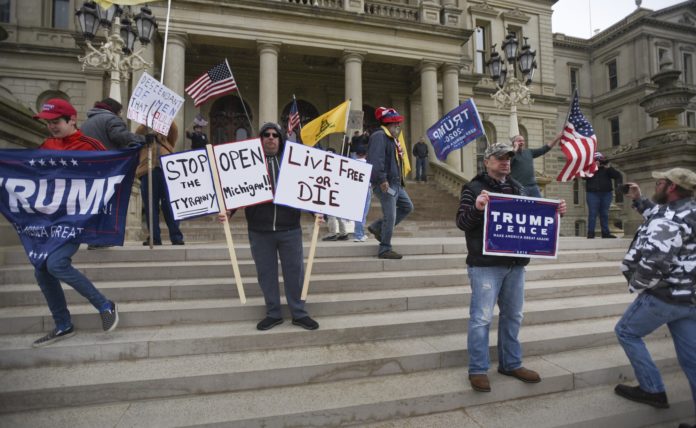
President Trump announced states could begin reopening to each governor’s discretion on Thursday. While the administration provided federal guidelines for reopening, its lack of clarity and mandates fails to create a united front against the pandemic.
The guidelines, outlined in a plan called “Opening Up America Again,” suggests a three-part reopening in two-week increments: first with public places with enforced physical distancing, next reopening schools and allowing social gatherings less than 50, and lastly reopening of work sites and other venues.
While the guidelines recommend waiting for a “downward trajectory” or reported cases within a 14-day period, this is not a requirement. Allowing states freedom to make autonomous choices makes intuitive sense since the severity of cases differs so much based on region, particularly based on population density. However, there should be a standard quota enforced across the board (that each state may meet at different times). Giving governors mere guidelines without any enforcement defeats the effectiveness of a nationwide fight against a pandemic at all. It takes consistency across all states for the country to stay safe.
South Carolina, for example, reopened retail stores, department stores, sporting goods stores and flea markets on Monday despite not experiencing a two-week downturn of cases.
Because the federal government is not enforcing the two-week requirement, states such as South Carolina are reopening prematurely and endangering populations who place their trust in the local government orders.
Individual states who make the choice to reopen early are not going to be the only ones affected either. The federal guidelines did not make any restrictions or statements in cross-state travel, meaning infected individuals could contaminate other regions, even those with more strict regulations.
While the restlessness of stay-at-home orders and economic insecurity of business closures should be considered in the decision-making process, it should not override the scientific evidence that points to the severity of the situation.
According to the most recent data gathering by The New York Times, there are up to 804,000 cases in the U.S. And new tests are showing that there could be even more people infected than what the statistics have been showing.
Two new studies using antibodies, conducted in Santa Clara County and Los Angeles County, showed this very reality. The results from Los Angeles indicated as many as 220,00 to 442,000 residents have been exposed, whereas other statistics showed only 8,000 cases at the time.
Hundreds of protesters took to the streets in North Carolina, Michigan and Missouri rallying against stay-at-home orders. With signs expressing dissent over the continued closures, protesters held signs that held sentiment ranging from “I need a haircut” to “Give me liberty or give me COVID-19.”
Trump has explicitly expressed support for these protesters, too. Tweeting support saying, “LIBERATE MINNESOTA!,” “LIBERATE MICHIGAN” and “LIBERATE VIRGINIA, and save your great 2nd Amendment. it is under siege!”
By contradicting the guidelines released by his own administration, Trump provides even more leeway to states failing to comply by safe lock down procedure.
Appeasing to the people’s desire to go back out rather than looking to the objective statistics of cases is not good leadership. Leading a country through a pandemic requires following the advice of scientists and experts, not the pickets outside the office gates.
By failing to exercise enforcement powers over the states, the federal government has given governors more decision-making power, yes, but also made them more vulnerable to the appeals of their residents.





